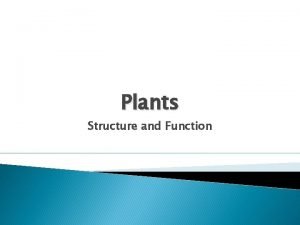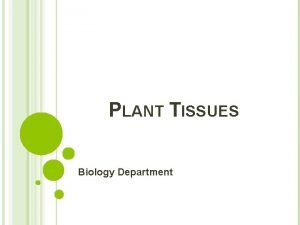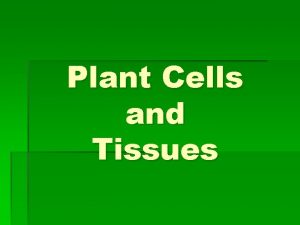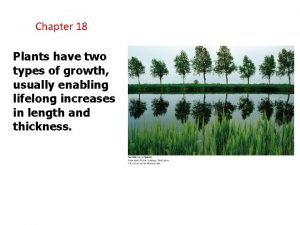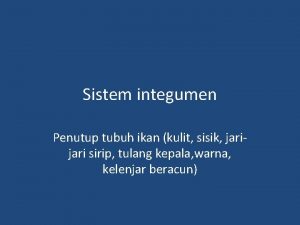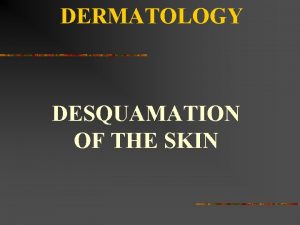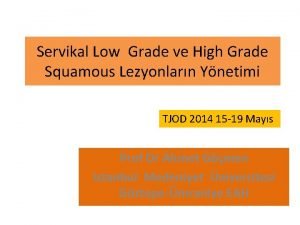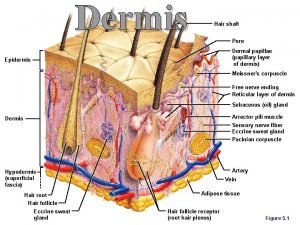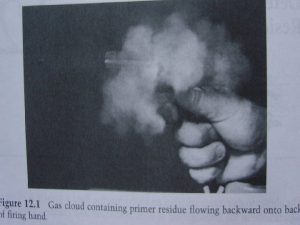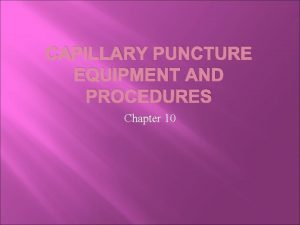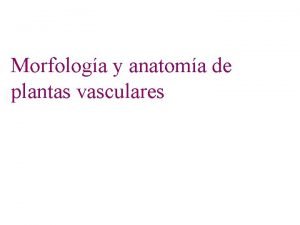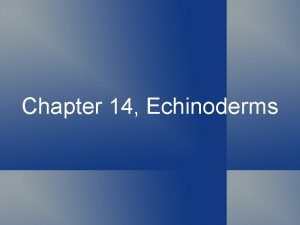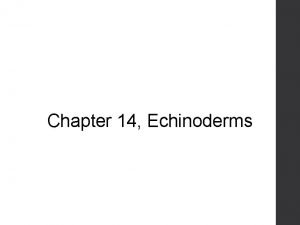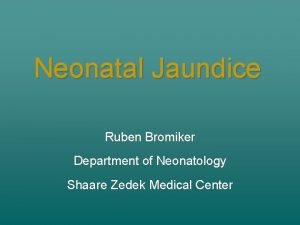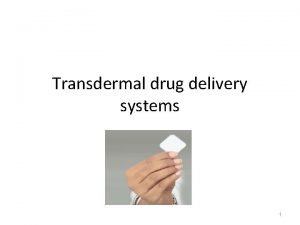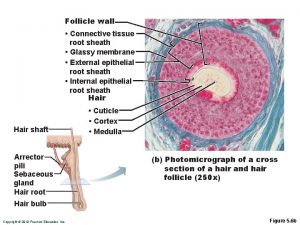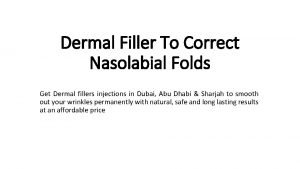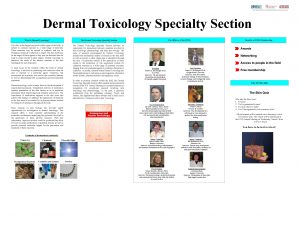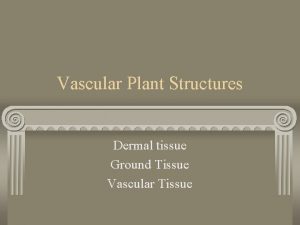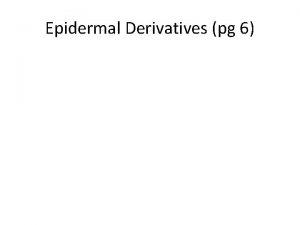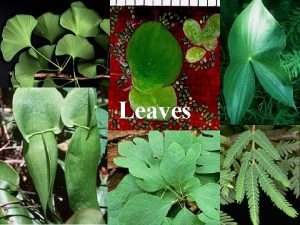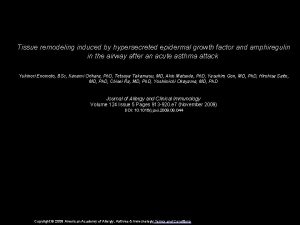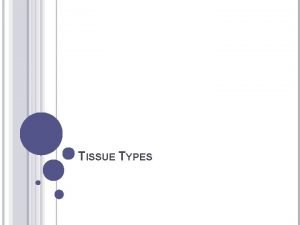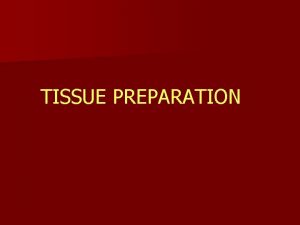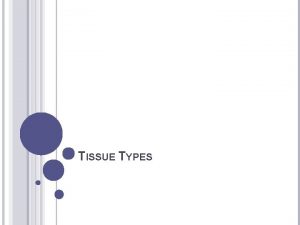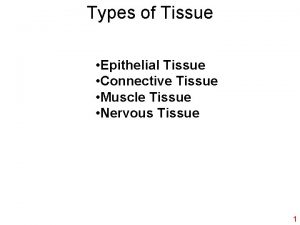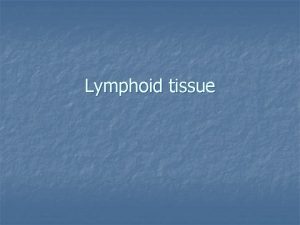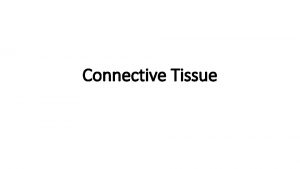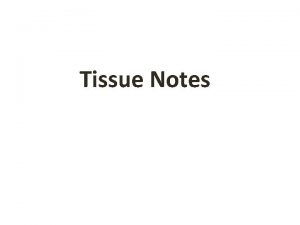Tissue System The dermal or Epidermal Tissue System





























- Slides: 29

Tissue System The dermal or Epidermal Tissue System 2. The Fundamental or Ground Tissue System 3. The Vascular Tissue System 1.

Promeristem Protoderm Epidermis Epidermal Tissue system Procambium General meristem Vascular bundle Ground meristem Vascular tissue system Cortex, pericycle, medulary ray, pith


The Dermal Tissue System The Epidermis Functions of Epidermis i) Protect the internal soft tissue against mechanical injury ii) Prevent excessive transpiration iii) Store water in xerophytic plant iv) Secretory substances

Structures of epidermal cells Morphology B) Arrangement C) Cell contents D) Wall structures A)

Special epidermal structures � 1. Lithocytes �Deposition of calsium carbonate crystal �Arranged in the form of bunches, like those of grapes �Such deposition is called cystolith and cells containing them are called lithocytes

2. Myrosin cell �Contain special sac-like cells scattered in the epidermis �Filled with enzyme myrosin, called myrosin cells �These are idoblastic cell

3. Scleretic cells �Epidermal cells contain sclereids 4. Bulliform cells Bubble like cells are found in certain grass family Bulliform cells are mainly water containing cells Less amount of chlorophyll content

5. Stomata 1. Ranunculaceous or Anomocytic 2. Cruciferous or Anisocytic 3. Rubiaceous or Paracytic 4. Diacytic stomato

Anomocytic Paracytic Anisocytic Diacytic




6. Trichome A. Non-glandular trichomes i) Unicellular trichome ii) Multicellular trichome B. Glandular trichomes Include unicellular and multicellular trichomes which secret a sticky substances




7. Root hairs �Unicellular, elongated �Arises from the epidermal cells of roots �They are usually absent in aquatic roots

Hairs or Trichome i) Unicellular ii) Multicellular iii) Stinging hairs iii) Scale or peltate hairs

Vascular Tissue �Conducting strand known as vascular bundle �Xylem and phloem

Origin of vascular tissue �Procambium �Cambium

Arrangement �Exarch �Endarch �Mesarch

Types of Vascular bundle Radial 2. Conjoint 3. Concentric 1.

Radial �Xylem and phloem are found as separate patchs on alternate radii




Conjoint �Xylem and phloem occur side by side on the same radius A. Collateral i) Open type ii) Closed type B. Bicollateral i) Open type ii) Closed type

Concentric �One complex tissue remains surrounded by other Amphivasal or leptocentric B. Amphicribal or hadrocentric A.
 Dermal or epidermal tissue system
Dermal or epidermal tissue system Vascular dermal and ground tissue
Vascular dermal and ground tissue Dermal tissue types
Dermal tissue types Example of dermal tissue
Example of dermal tissue Lateral growth in plants
Lateral growth in plants Penutup tubuh ikan
Penutup tubuh ikan Toxic epidermal necrolysis treatment
Toxic epidermal necrolysis treatment Hpv pozitif smear negatif
Hpv pozitif smear negatif Papillary dermal layer
Papillary dermal layer Dermal papillae
Dermal papillae Dermal nitrate test procedure
Dermal nitrate test procedure Equipment for capillary puncture
Equipment for capillary puncture Morfologa
Morfologa Dermal ossicles
Dermal ossicles Echinoderms characteristics
Echinoderms characteristics Echinoderms characteristics
Echinoderms characteristics Zeenat antibiotics
Zeenat antibiotics Dermal zones of jaundice
Dermal zones of jaundice Layer of tissue
Layer of tissue Factors affecting dermal penetration of drugs
Factors affecting dermal penetration of drugs Dermal papilla
Dermal papilla Jaringan epitel dapat ditemukan di
Jaringan epitel dapat ditemukan di Hát kết hợp bộ gõ cơ thể
Hát kết hợp bộ gõ cơ thể Frameset trong html5
Frameset trong html5 Bổ thể
Bổ thể Tỉ lệ cơ thể trẻ em
Tỉ lệ cơ thể trẻ em Voi kéo gỗ như thế nào
Voi kéo gỗ như thế nào Glasgow thang điểm
Glasgow thang điểm Chúa sống lại
Chúa sống lại Kể tên các môn thể thao
Kể tên các môn thể thao

